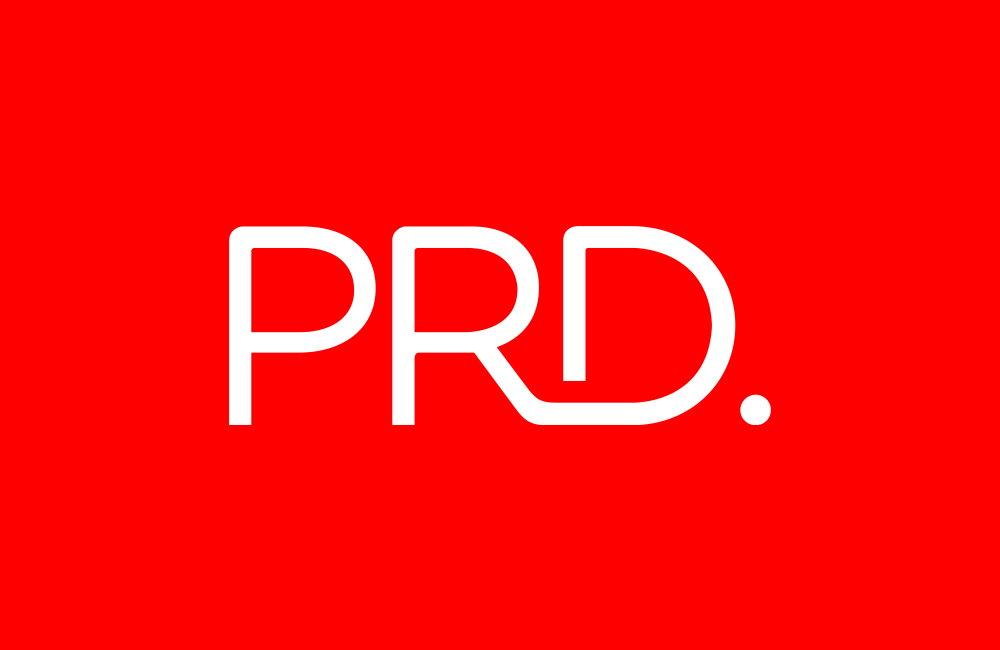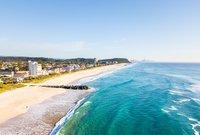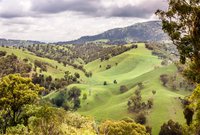Brisbane Vacant Land Highlight Report Q2 2011
Local Area Characteristics The River City Also known as the River City, the Brisbane Local Government Area (LGA) boasts the largest population for any LGA within Australia. This large population has followed strong economic growth and a relative affordability of real estate, which drove demand and facilitated significant levels of investment within the region. Due to the constraints of the urban boundaries, this has had a flow on effect to other areas surrounding Brisbane and resulted in the development of a number of satellite cities. There are a number of suburban centres within Brisbane, such as Toowong, Chermside and Mount ...
Local Area Characteristics The River City
Also known as the River City, the Brisbane Local Government Area (LGA) boasts the largest population for any LGA within Australia. This large population has followed strong economic growth and a relative affordability of real estate, which drove demand and facilitated significant levels of investment within the region. Due to the constraints of the urban boundaries, this has had a flow on effect to other areas surrounding Brisbane and resulted in the development of a number of satellite cities. There are a number of suburban centres within Brisbane, such as Toowong, Chermside and Mount Gravatt forming a range of alternatives to commuting into the Central Business District.
Over the years, Brisbane has developed distinct entertainment and cultural precincts such as New Farm, Fortitude Valley and West End, providing a unique ambience supported by restaurants, boutique cafes and shopping alternatives. A number of iconic congregative public locations within the CBD include the popular Queen Street Mall, Roma Street Parklands and Botanical Gardens. These areas not only serve as landmarks but also have a recreational function, providing open space for gatherings and organised events.
In 1982, Brisbane hosted the Commonwealth Games which led to significant investments in infrastructure and sporting facilities. Furthermore, in 1988 the Southbank parklands located on the southern bank of the Brisbane River played host to the World Expo. This played and important role in boosting the national and international profile of Brisbane.
Over the years, this established metropolitan area has enjoyed prolonged development that has supported strong growth in terms of the local economy, population and property values. As with all developing cities, a great demand for real estate has prompted significant development, gentrification and densification within a close proximity to the CBD. As such, affordability and the location will play a pivotal role in demand for real estate.
Demographics & Population
Stronger population growth in suburbs further from the CBD is associated with dwellings being more affordable and available in these areas
According to the Australian Bureau of Statistics Estimated Resident Population, at June 2010 Brisbane recorded a population of 1,067,279 residents. This figure represents a strong annual growth rate of 1.4% or 14,841 new residents. Although this growth rate remains strong, yielding a sustained demand for property, it registers historically low within the Brisbane LGA, which recorded an annual growth of 1.8% per annum over the past 10 years.
The Northwest and Southwest Outer Regions of Brisbane have sustained higher growth compared to the inner precincts, recording 1.6% and 1.5% increases over the 12 months to June 2010. Despite the stronger appeal of inner city precincts, this was a predictable statistic with dwellings more affordable and available in suburbs further from the CBD.
As seen in the graph to the right, if this growth rate remains moderately strong, the Brisbane LGA population can be expected to reach levels as high as 1,235,344 by 2031. To give an indication of the future demand for housing, PRD Research uses the increase in population and divides it by the current average household size of three residents per dwelling. This has yielded an estimate of the future demand for housing at 56,022 new dwellings by 2031.
As a result of the Global Financial Crisis, stricter lending criteria and a lack of investors has continued to dampen development activity in Brisbane. However, the total residential dwellings approved over the 12 months to June 2010 registered 7,140, a significant increase from the 2009 financial year which saw 4,857 new dwellings approved. When comparing this level of activity to the Estimated Resident Population growth over the same period, this resulted in a surplus of 4,947 dwellings through this period. The strongest level of new residential dwelling approvals was within the Northwest Outer Precinct with 2,410 approvals. Whilst only a rough indication, this surplus should slightly alleviate the housing shortage and is owed to slowing population growth and increased activity during the 12 month period to June 2010. More recently, dwelling approvals have begun to decrease with a fall of 658 approvals recorded during the period from September 2010 to February 2011.
Brisbane City has a high proportion of family households equating to 68.5% of all dwellings. Within Brisbane, a significant portion of the demographic is aged under 15 years at 18%, with 11% of residents aged over 65 years.
Demand for real estate in Brisbane City is directly associated to affordability and ease of access to Brisbanes suburban centres. As housing in Brisbane becomes less affordable, there will be greater emphasis placed on the release of developable land and densification for Brisbane to maintain a property market capable of servicing all demographics.
Future Development and Infrastructure
In the wake of the January floods which wreaked havoc across Queensland, a significant level of funding has been allocated for the rebuild to restore critical infrastructure. The State Government has sourced $1 billion of this from deferring some existing non-critical infrastructure projects, which will see a number of highway upgrades put on hold.
Brisbane City currently has a number of infrastructure developments either proposed or under construction. Through zoning and the development application process, these investments have been regulated by the Brisbane City Council to cater for the forecasted growth in population and also facilitate economic development. However, with subdued demand from purchasers slowing the level of presales, finance remaining tight and the task of the flood rebuild ahead, it is expected that the much needed infrastructure will be postponed.
According to the Queensland Department of Infrastructure and Planning, there is 2,830 hectares of broadhectare land available for residential development remaining within the Brisbane LGA, with provision for a further 10 hectares of low density residential development. This equates to 2.1% of the total area, inclusive of offshore land, falling under the Brisbane LGA. This has the potential to yield 57,455 dwellings through the development of this land in different capacities. Of the total broadhectare stock remaining, 2,253 hectares is classed as being suitable for detached urban developments, supporting a potential yield of 24,795 dwellings. The total supply of higher density developable land is far less than detached urban land with only 578 hectares, however this has a much higher yield of 32,645 dwellings.
As identified by the Department of Infrastructure and Planning, the suburbs with the greatest capacity for dwelling yields are Eagle Farm, Bowen Hills and Rochedale. These areas have a combined potential to yield approximately 17,180 dwellings. However, where the potential for dwellings in Eagle Farm and Bowen Hills is leveraged off provisions for high density residential development, Rochedale has the greatest potential for detached residential developments. Based on a medium level of demand and taking into account diminishing household sizes, the Department of Infrastructure and Planning estimate the supply of vacant land will run out in eight years, which is a relatively short period of time when compared to the Ipswich LGA which has a projected 22 years of supply remaining.
Residential Infill Development Overview
Although development of broadhectare land accounts for a significant portion of the supply of dwellings, infill development provides the strongest ongoing yield of dwellings. The following section provides an overview of multi-dwelling infill projects at various stages of the development pipeline, as per the most recent Residential Infill Development Report from the Office of Economic and Statistical Research (OESR). Based on the most recent data to 30 June 2010, there were 3,511 multiple dwelling infill projects within South East Queensland, equating to a potential 77,166 dwellings. Brisbane accounted for the majority of infill development at 35,433 new dwellings, 56.3% of which are currently approved projects. The 10 highest dwelling yields by suburb were all located within close proximity to the CBD and therefore are likely to be high density infill developments. The top three suburbs by dwelling yield were Brisbane CBD (2,592), Newstead (2,132) and West End (1,721). Of the Brisbane LGA residential multiple dwelling infill projects, just under 70% of developments have a product yield of 50 dwellings or more.
Vacant Land Market
The shortage of active competition means that from a buyers stand point, this is generating an environment favouring those willing to ride out the bottom of the property cycle The data included within this market analysis is based on all settled transactions over the past ten years and is current to April 2011.
The median price recorded over the six months ending December 2010 for the Brisbane City LGA was $330,000. This represents a price peak following a significant drop in sales activity on the incentive driven period over the half year to December 2009. This equates to a very strong 12 month growth rate of 16.8% or $47,500. However, this increase is predominately due to a significant contraction in the portion of sales transacting within the $200,000 to $400,000 market segment, as opposed to increasing capital values. Over the December 2010 period, this price bracket has incurred a 73% decrease in sales when compared to the December 2009 period.
According to Master Builders Queensland, as at the December quarter 2010 the average cost of building a 200m_ brick veneer home with four bedrooms, two baths and two car garage is roughly $317,000. This represents an increase of 5.4% over the past 12 months. Master Builders Queensland has highlighted that this increase is the result of the 6-star energy requirements for new houses which came into effect from May 2010. For a home buyer to build their own house, PRD Research has estimated that this will cost an average of $647,000, $108,295 greater than the Brisbane median house price of $538,705.
During the six months to December 2010, sales activity has decreased a staggering 60.4%, recording only 427 settled sales. This is indicative of current market conditions with consecutive interest rate rises, the surprise November rate rise and the withdrawal of the First Home Owners Boost at the end of 2009 culminating to dampen buyer confidence within the market. As a result this has prompted potential buyers to hold off until there is more certainty in the market. The most active vacant land price point for the December 2010 half year was $300,000 to $349,999, which accounted for 15.9% of activity. Wakerley accounted for the most sales within this price point, at 11 (16.2%) of the total 122 settled transactions. This was followed by Calamvale with 10 (14.8%). The bulk of vacant land sales occurred in lots sized between 400m_ to 599m_ with 47% of vacant land sales, followed by 600m_ to 799m_ with 23%.
The recent contraction within Brisbanes vacant land market has occurred in line with decreasing buyer confidence. This has seen the household savings rate increase to 10% of annual net disposable income, indicating that uncertainty in the housing market is seeing potential purchasers save their disposable income and servicing existing debt. However, the shortage of active competition means that from a buyers stand point, this is helping generate an environment favouring those willing to ride out the bottom of the property cycle.
Also known as the River City, the Brisbane Local Government Area (LGA) boasts the largest population for any LGA within Australia. This large population has followed strong economic growth and a relative affordability of real estate, which drove demand and facilitated significant levels of investment within the region. Due to the constraints of the urban boundaries, this has had a flow on effect to other areas surrounding Brisbane and resulted in the development of a number of satellite cities. There are a number of suburban centres within Brisbane, such as Toowong, Chermside and Mount Gravatt forming a range of alternatives to commuting into the Central Business District.
Over the years, Brisbane has developed distinct entertainment and cultural precincts such as New Farm, Fortitude Valley and West End, providing a unique ambience supported by restaurants, boutique cafes and shopping alternatives. A number of iconic congregative public locations within the CBD include the popular Queen Street Mall, Roma Street Parklands and Botanical Gardens. These areas not only serve as landmarks but also have a recreational function, providing open space for gatherings and organised events.
In 1982, Brisbane hosted the Commonwealth Games which led to significant investments in infrastructure and sporting facilities. Furthermore, in 1988 the Southbank parklands located on the southern bank of the Brisbane River played host to the World Expo. This played and important role in boosting the national and international profile of Brisbane.
Over the years, this established metropolitan area has enjoyed prolonged development that has supported strong growth in terms of the local economy, population and property values. As with all developing cities, a great demand for real estate has prompted significant development, gentrification and densification within a close proximity to the CBD. As such, affordability and the location will play a pivotal role in demand for real estate.
Demographics & Population
Stronger population growth in suburbs further from the CBD is associated with dwellings being more affordable and available in these areas
According to the Australian Bureau of Statistics Estimated Resident Population, at June 2010 Brisbane recorded a population of 1,067,279 residents. This figure represents a strong annual growth rate of 1.4% or 14,841 new residents. Although this growth rate remains strong, yielding a sustained demand for property, it registers historically low within the Brisbane LGA, which recorded an annual growth of 1.8% per annum over the past 10 years.
The Northwest and Southwest Outer Regions of Brisbane have sustained higher growth compared to the inner precincts, recording 1.6% and 1.5% increases over the 12 months to June 2010. Despite the stronger appeal of inner city precincts, this was a predictable statistic with dwellings more affordable and available in suburbs further from the CBD.
As seen in the graph to the right, if this growth rate remains moderately strong, the Brisbane LGA population can be expected to reach levels as high as 1,235,344 by 2031. To give an indication of the future demand for housing, PRD Research uses the increase in population and divides it by the current average household size of three residents per dwelling. This has yielded an estimate of the future demand for housing at 56,022 new dwellings by 2031.
As a result of the Global Financial Crisis, stricter lending criteria and a lack of investors has continued to dampen development activity in Brisbane. However, the total residential dwellings approved over the 12 months to June 2010 registered 7,140, a significant increase from the 2009 financial year which saw 4,857 new dwellings approved. When comparing this level of activity to the Estimated Resident Population growth over the same period, this resulted in a surplus of 4,947 dwellings through this period. The strongest level of new residential dwelling approvals was within the Northwest Outer Precinct with 2,410 approvals. Whilst only a rough indication, this surplus should slightly alleviate the housing shortage and is owed to slowing population growth and increased activity during the 12 month period to June 2010. More recently, dwelling approvals have begun to decrease with a fall of 658 approvals recorded during the period from September 2010 to February 2011.
Brisbane City has a high proportion of family households equating to 68.5% of all dwellings. Within Brisbane, a significant portion of the demographic is aged under 15 years at 18%, with 11% of residents aged over 65 years.
Demand for real estate in Brisbane City is directly associated to affordability and ease of access to Brisbanes suburban centres. As housing in Brisbane becomes less affordable, there will be greater emphasis placed on the release of developable land and densification for Brisbane to maintain a property market capable of servicing all demographics.
Future Development and Infrastructure
In the wake of the January floods which wreaked havoc across Queensland, a significant level of funding has been allocated for the rebuild to restore critical infrastructure. The State Government has sourced $1 billion of this from deferring some existing non-critical infrastructure projects, which will see a number of highway upgrades put on hold.
Brisbane City currently has a number of infrastructure developments either proposed or under construction. Through zoning and the development application process, these investments have been regulated by the Brisbane City Council to cater for the forecasted growth in population and also facilitate economic development. However, with subdued demand from purchasers slowing the level of presales, finance remaining tight and the task of the flood rebuild ahead, it is expected that the much needed infrastructure will be postponed.
According to the Queensland Department of Infrastructure and Planning, there is 2,830 hectares of broadhectare land available for residential development remaining within the Brisbane LGA, with provision for a further 10 hectares of low density residential development. This equates to 2.1% of the total area, inclusive of offshore land, falling under the Brisbane LGA. This has the potential to yield 57,455 dwellings through the development of this land in different capacities. Of the total broadhectare stock remaining, 2,253 hectares is classed as being suitable for detached urban developments, supporting a potential yield of 24,795 dwellings. The total supply of higher density developable land is far less than detached urban land with only 578 hectares, however this has a much higher yield of 32,645 dwellings.
As identified by the Department of Infrastructure and Planning, the suburbs with the greatest capacity for dwelling yields are Eagle Farm, Bowen Hills and Rochedale. These areas have a combined potential to yield approximately 17,180 dwellings. However, where the potential for dwellings in Eagle Farm and Bowen Hills is leveraged off provisions for high density residential development, Rochedale has the greatest potential for detached residential developments. Based on a medium level of demand and taking into account diminishing household sizes, the Department of Infrastructure and Planning estimate the supply of vacant land will run out in eight years, which is a relatively short period of time when compared to the Ipswich LGA which has a projected 22 years of supply remaining.
Residential Infill Development Overview
Although development of broadhectare land accounts for a significant portion of the supply of dwellings, infill development provides the strongest ongoing yield of dwellings. The following section provides an overview of multi-dwelling infill projects at various stages of the development pipeline, as per the most recent Residential Infill Development Report from the Office of Economic and Statistical Research (OESR). Based on the most recent data to 30 June 2010, there were 3,511 multiple dwelling infill projects within South East Queensland, equating to a potential 77,166 dwellings. Brisbane accounted for the majority of infill development at 35,433 new dwellings, 56.3% of which are currently approved projects. The 10 highest dwelling yields by suburb were all located within close proximity to the CBD and therefore are likely to be high density infill developments. The top three suburbs by dwelling yield were Brisbane CBD (2,592), Newstead (2,132) and West End (1,721). Of the Brisbane LGA residential multiple dwelling infill projects, just under 70% of developments have a product yield of 50 dwellings or more.
Vacant Land Market
The shortage of active competition means that from a buyers stand point, this is generating an environment favouring those willing to ride out the bottom of the property cycle The data included within this market analysis is based on all settled transactions over the past ten years and is current to April 2011.
The median price recorded over the six months ending December 2010 for the Brisbane City LGA was $330,000. This represents a price peak following a significant drop in sales activity on the incentive driven period over the half year to December 2009. This equates to a very strong 12 month growth rate of 16.8% or $47,500. However, this increase is predominately due to a significant contraction in the portion of sales transacting within the $200,000 to $400,000 market segment, as opposed to increasing capital values. Over the December 2010 period, this price bracket has incurred a 73% decrease in sales when compared to the December 2009 period.
According to Master Builders Queensland, as at the December quarter 2010 the average cost of building a 200m_ brick veneer home with four bedrooms, two baths and two car garage is roughly $317,000. This represents an increase of 5.4% over the past 12 months. Master Builders Queensland has highlighted that this increase is the result of the 6-star energy requirements for new houses which came into effect from May 2010. For a home buyer to build their own house, PRD Research has estimated that this will cost an average of $647,000, $108,295 greater than the Brisbane median house price of $538,705.
During the six months to December 2010, sales activity has decreased a staggering 60.4%, recording only 427 settled sales. This is indicative of current market conditions with consecutive interest rate rises, the surprise November rate rise and the withdrawal of the First Home Owners Boost at the end of 2009 culminating to dampen buyer confidence within the market. As a result this has prompted potential buyers to hold off until there is more certainty in the market. The most active vacant land price point for the December 2010 half year was $300,000 to $349,999, which accounted for 15.9% of activity. Wakerley accounted for the most sales within this price point, at 11 (16.2%) of the total 122 settled transactions. This was followed by Calamvale with 10 (14.8%). The bulk of vacant land sales occurred in lots sized between 400m_ to 599m_ with 47% of vacant land sales, followed by 600m_ to 799m_ with 23%.
The recent contraction within Brisbanes vacant land market has occurred in line with decreasing buyer confidence. This has seen the household savings rate increase to 10% of annual net disposable income, indicating that uncertainty in the housing market is seeing potential purchasers save their disposable income and servicing existing debt. However, the shortage of active competition means that from a buyers stand point, this is helping generate an environment favouring those willing to ride out the bottom of the property cycle.





